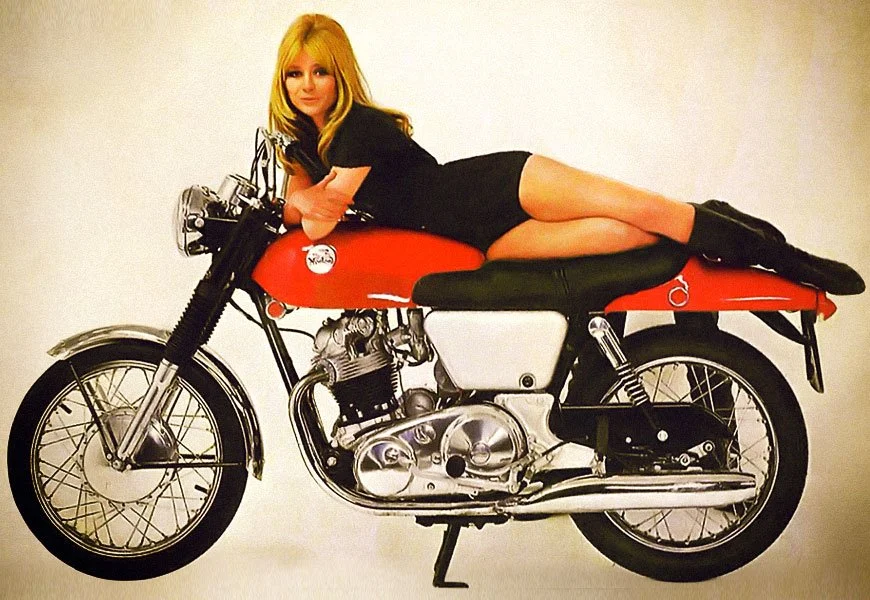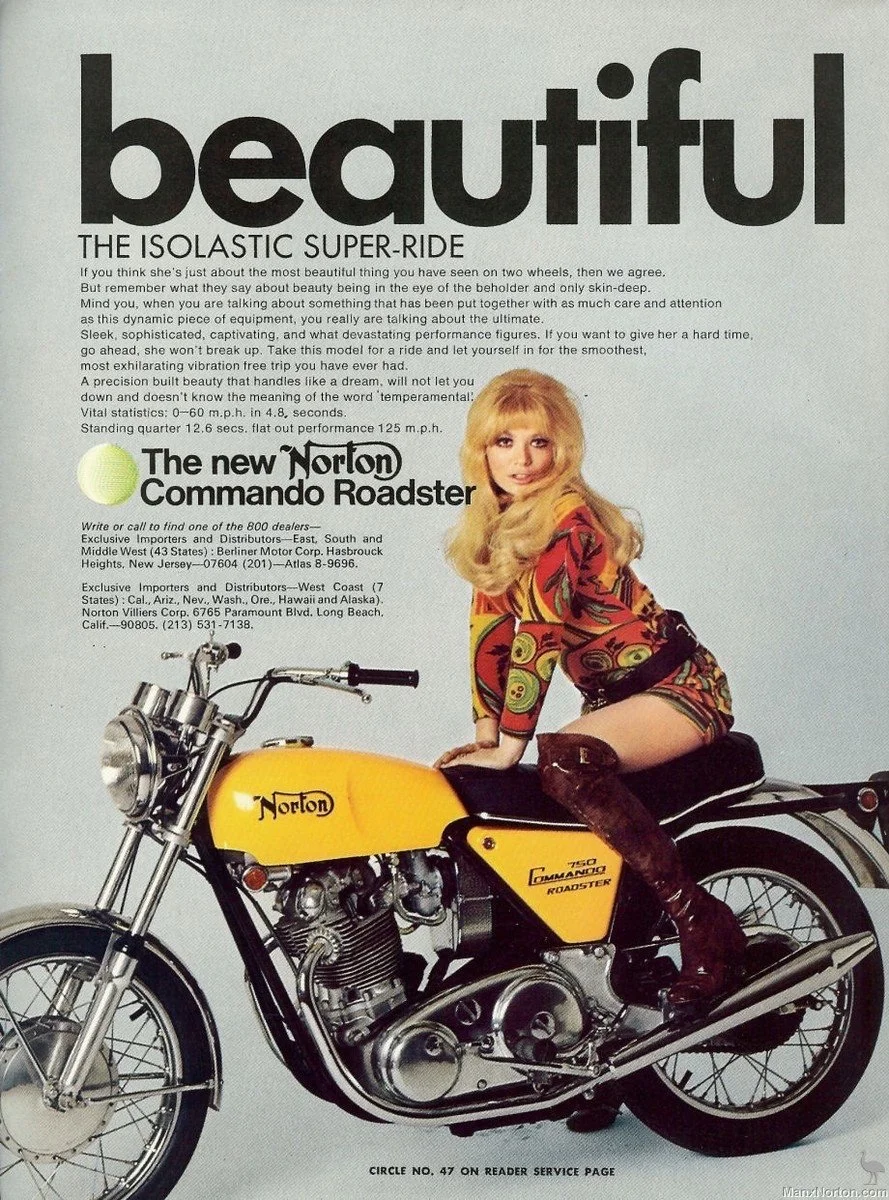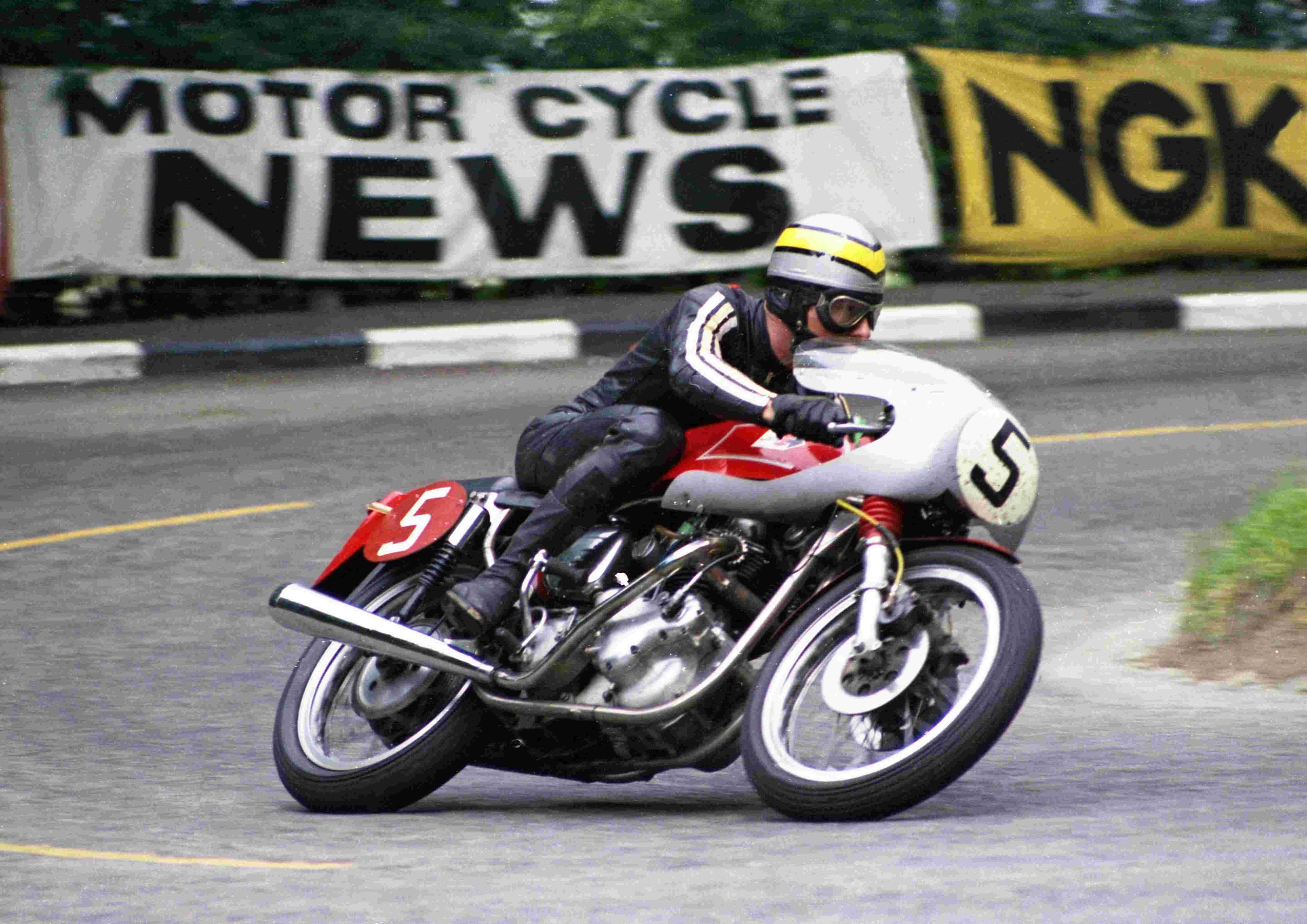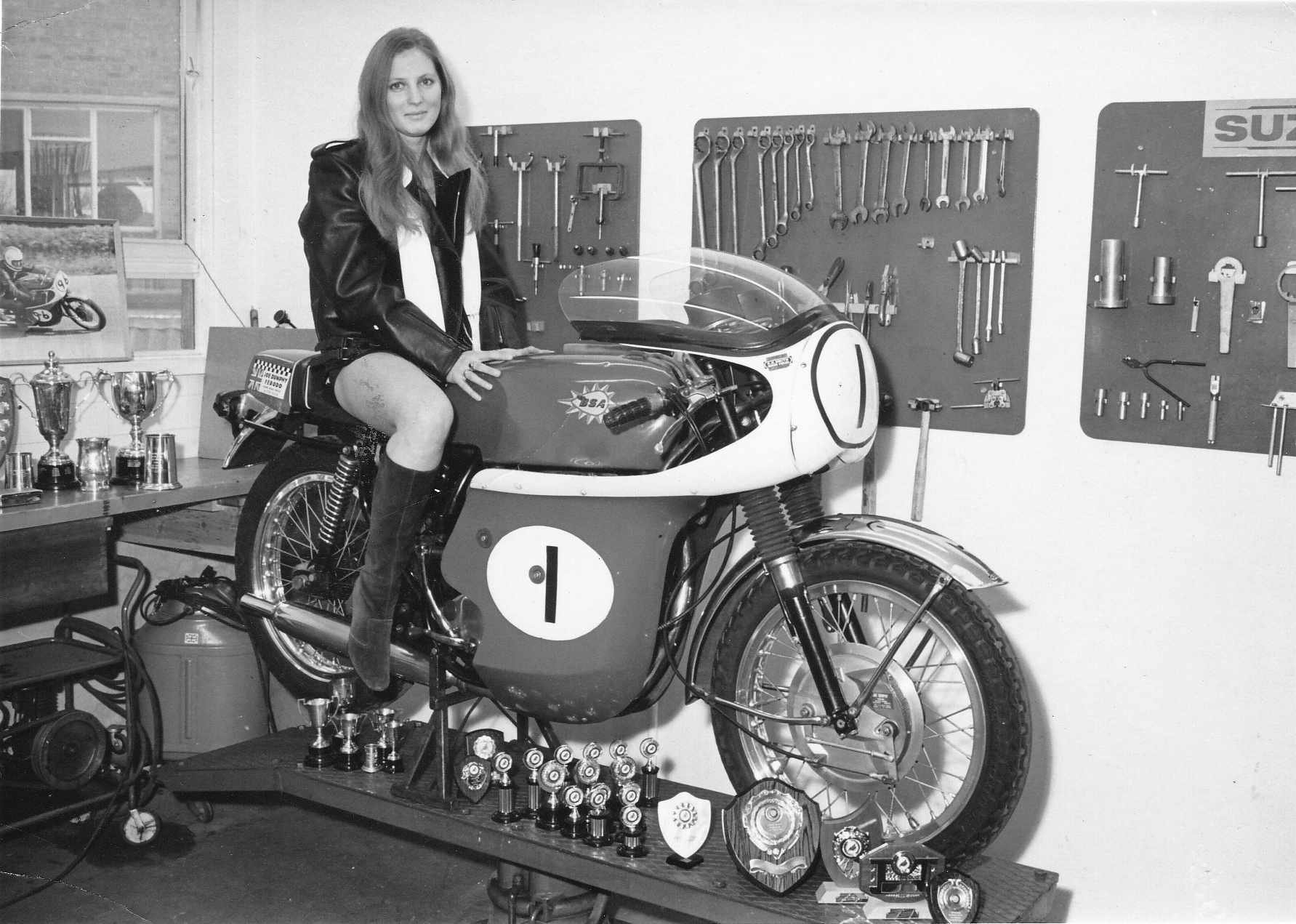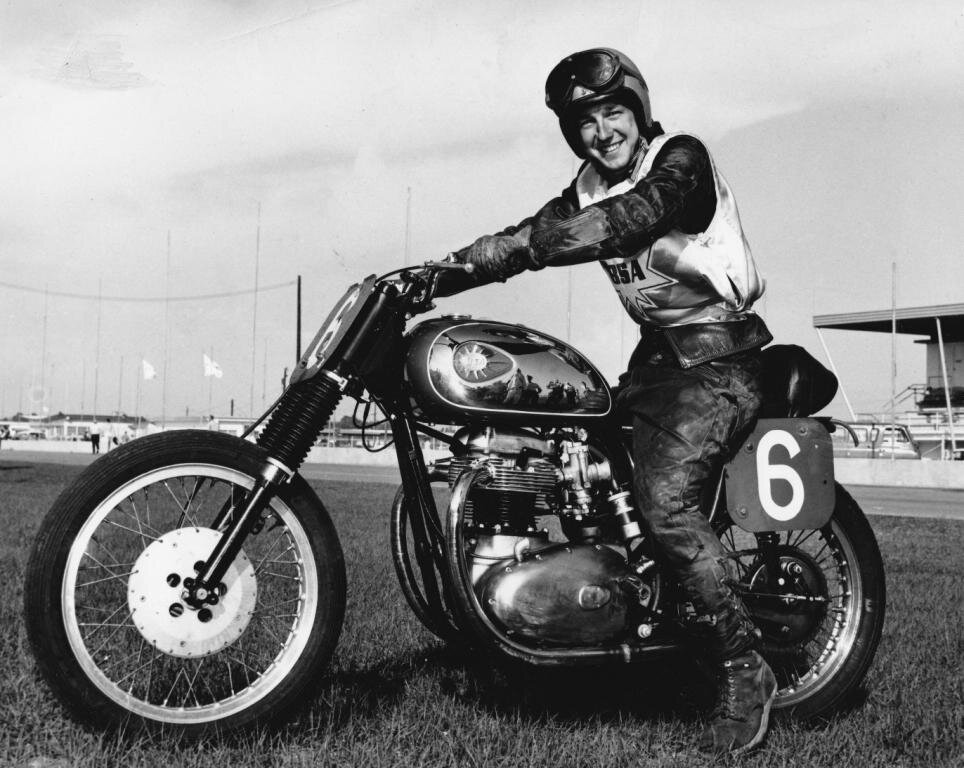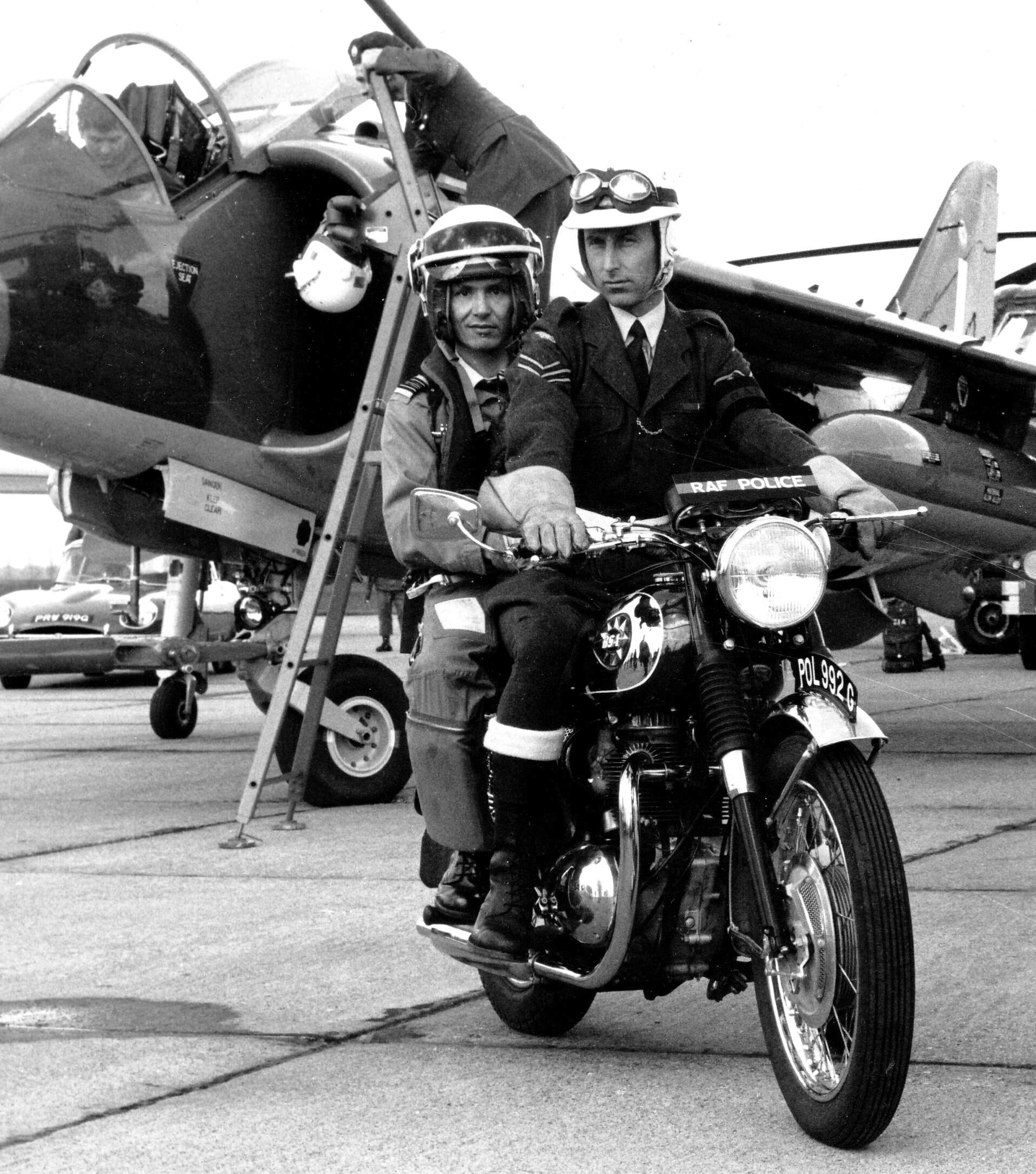Norton Commando. The late 1960s saw the British motorcycle industry challenged as never before. While many manufacturers collapsed in the face of oriental sophistication Norton banked all on a stop gap solution which looked like madness at the time; ditching the exemplary featherbed frame in favour of mounting the aged Atlas engine in a rubber mounted alternative. It worked, and a legend was born.
The Commando was no sooner on the road than it became dominant on the track and through ringing the styling and engineering changes the Commando remained relevant while other British manufacturers shut up shop.
The final evolution of the Commando looked vastly different from the Fast Back original and every development of the machine is meticulously documented in Mick Duckworth’s much praised book
With a foreword by Norton legend Peter Williams Norton Commando documents the early developments and abortive attempts to incorporate a new engine design, moves on to the early styling exercises and then the definitive Roadster and Interstate incarnations. Less well know models such as the High Rider and JPS road models are also covered as is the impressive story of the Commando on the track.
As would be expected of any work written by Mick Duckworth what makes this book standout however is the depth of research and previously unseen images on show, all contributing to a highly readable and visually impressive book.
If you haven‘t already got a copy, get one! These are the very last copies available of this truly outstanding book.
Dancing down the pit lane. If you’ve heard the name Stuart Hicken you may know that he owns Mallory Park or that he runs Hawk Racing, one of BSB’s most successful and long lived teams. There is far more to Stuart’s story however. A 1960s Rocker on the road, he soon found himself rubbing shoulders with a young Barry Sheene and a pre-stardom Mick Grant, while racing everything from G50s to TZ Yamahas. Business then took over and after becoming Europe’s most successful Bultaco dealer he was soon importing White Power suspension from Holland, being in exactly the right place as a global suspension revolution took off
Road racing was always Stuart’s true love however and a chance encounter with the naiscent Norton Rotary road race team led to a stint as a World Superbike team manager before his own team, Hawk Racing, was born. John Reynolds and Michael Rutter were two of his early riders, but the complete list reads like a who’s who of British motorcycle sport, many nutured from a young age, and many around Mallory Park.
Stuart grew up near Mallory and the opportunity to take over the flagging circuit was too good to turn down. A new chapter had started, as did a relationship with Michael Dunlop, which began in 2014
Michael Dunlop’s father, Robert Dunlop, had ridden for Stuart and through that connection a long term relationship grew. It resulted in multiple TT wins, but as with much of Stuart’s story, those are just a part.
Weighing in at over 1kg, with over 300 images over 280 pages, this is one hell of a read for anyone interested in British motorcycle sport over the last fifty years.
Racing off the Page. The 1970s were a high point for the British motorcycle trade. The British makes themselves may have been on their way out, but the streets were awash with metal flake Japanes and Italian alternatives, and what alternatives they were. Every few months a new icon seemed to appear, from the seminal Honda CB750 to Laverda’s awe inspiring Jota. There was a tidal wave of new models and John Moulton got to test the best, writing a weekly column in the Cheshire Observer
Through the column John became inexorably sucked into the north west’s racing scene, initially as a race reported and photographer, but soon as a jack of all trades. This included delivering bikes for Barry Sheene, road testing a TT winning Honda for Dugdale Motorcycles and track testing a Suzuki Production racer for dealer Tom Loughridge. That final connection proved fortuitous, as hoping to open a new branch Tom Loughridge offered John the job, which John duly acceted. It opened a whole new chapter
On the sales floor John worked through the peak years of motorcycle sales, dealing with the many characters found on both sides of the counter. He still maintained his links with the local racing scene however, eventaully sponsoring local sidecar star Allen Steele, and it’s all told over 200-plus hard-back pages, featuring dozens of period images, from the glorious 1970s.
Hanks - On my knees. Birmingham born and bred Roy Hanks has been the face of Erdington’s Fred Hanks Motorcycles since the 1970s. His family also published the TT Special newspaper, while behind the scenes Roy was always active within the Auto Cycle Union, becoming an ACU Director in 1997. A position he still holds.
He is best known for his exploits on the track however, with the TT Sidecar Centennial being a case in point. 2023 marked the 100 years of sidecar racing on the Isle of Man and Roy competed in most of those meetings. Competing without break, from 1960 to 2016, across four generations of the Hanks family, from father Fred to granddaughter Jamie.
He remains the youngest person ever to have competed at the Isle of Man TT races and has been at the sharp-end of sidecar racing since forever.
He started racing alongside the BSA-powered ‘Birmingham Mafia’, survived the glory days of the Yamaha TZ750 powered rocketships, was a pioneer of the 350cc two-stroke outfits and was instrumental in developing the four-stroke F2 class, which was the basis for the 600cc machines we see today.
His achievements are too long to list, but the fact that he won the 1997 TT at his 59th attempt, long after most would have given up, tells you all you need to know about Roy Hanks. Racer, dealer, sports administrator, publisher and grandee of one of British motorsport’s greatest racing dynasties, Roy Hanks has done it all. And for a lot longer than anyone else!
Production Racers of the 1960s. There are plenty of books which cover motorcycle racing in the 1960s, but none on the most important class of them all. Production racing grew from humble beginnings, but it’s virtually all production racing now and it all started in the 1960s. This book explains quite how, by the end of the decade, even world champions graced the sport. Hailwood, Read, Gould, they all rode production bikes and Barry Sheene soon would too.
The class had teething problems along the way, with cheaters among the factory entrants, but the ‘scene’ rapidly developed and that development is explained through the voices of those involved. From long forgotten airfield circuits to the Barcelona 24hr races, from the 500-miler to the legendary ‘Hutch’ as the Hutchinson 100 was known. 16 two-page summaries also analyse the landmark road bikes of the period.
From the seminal Gold Star these range to the later Honda CB450, Triumph Trident, Ducati Mach I and Norton Commando, all of which featured in the production TT, once established in 1967. The TT more than any other event demonstrated just how meteorically production racing’s star had risen, and it’s all covered over 275 pages, featuring 350 images, 25 pages of race results and countless first hand stories and quotes.
Hailwood to Vincent. A list of classic competition machines from the golden age of British motorcycle racing is unlikely to include the BSA A65/50. Which is odd, as it won seven British National championships, a TT and the coveted American AMA No.1 plate among other titles. As Hailwood to Vincent recounts the lack of profile was partly due to BSA’s longstanding off-road bias, combined with a BSA-Triumph Group focus on promoting their three cylinder machines over the twins.
As a result of these factors much development of the A65 and A50 was carried out by BSA staff ‘out of hours’ with the American works team of 1970/71 similarly having to develop their own flat track machines to complement the big budget, works prepared, Rob North Rocket Threes. As the title implies this volume highlights the many competitors who made their mark on the BSA Unit twins, from Mike Hailwood’s landmark Hutchinson 100 victory to Chris Vincent’s many UK sidecar titles
It also includes contributions from all the members of the 1970/71 American BSA works team, but lesser known stories too. You’ll read of Graham Sanders heart breaking 2nd place in the 1970 European endurance racing championships , when he was barred from racing his A65 in the final round of the series at the Bol d’Or, as well as Alex Jorgensen’s titanic battle at the Houston Astrodome in 1980, where he defeated Freddie Spencer only to be piped at the post by Kenny Roberts. It’s all in Hailwood to Vincent
From The Other Side Of The Tracks. There are plenty of biographies by ex-sports stars, but few by their long-suffering partners. This book tips the balance a little, while shining a light on what it was like to perform in the dying days of the now mythical Continental Circus. Where the little guys …and girls… took on the stars of the works racing teams and won. Well, some-times.
It’s a fascinating read for fans of the glory years of Grand Prix racing and the Isle of Man TT, and takes the lid off what it was like to race as one of the many privateers.
“It is a beautifully written book which made me realise just how much our wives had to contend with whilst we pursued our chosen sport, often on the move and working in the most primitive of conditions.
What struck me most was just how close Sue and Clive’s relationship was and there's no doubting Sue’s flair for writing and lovely dry wit. With elements of hardship, failure, success, comedy and love, I can thoroughly recommend the book to anyone that has an interest in motorcycle racing, particularly back in the seventies and early eighties.”
– Charlie Williams. Ten times Isle of Man winner and TT legend
With a foreword by fellow privateer and 1980 350cc World Champion Jon Ekerold - the last such privateer to win a world title – Sue tracks Clive’s career from Bantam Racing Club to Grand Prix circus. Where, in 1980, MCN put Clive on a par with Barry Sheene as the Brit most likely to win a World Title. Neither did but that’s where the similarity ended. There were neither corporate sponsors nor works riders for Clive – besides an interlude with Armstrong – but there’s no resentment or envy in Sue’s book either. Only wit and warmth, though there are tears along the way too, From The Other Side Of The Tracks
Thunderbolts & Lightning. When it comes to books BSA’s twins are a neglected breed. There seemed a gap and Thunderbolts & Lightning now fills it. It’s also a little bit different from previous marque titles, in that it draws on interviews with eighty-plus ex-BSA staff and those directly associated with the machines. Along with period documentation, drawings and images, many of which you are unlikely to have come across before. Of particular interest to BSA enthusiasts will be the quotes and observations from staff directly involved, which start with Colin Washbourne and Ray Beach, the builders of the first prototype engines.
Contributors then included Chris Vincent and Peter Brown - both British sidecar champions as well as test riders of the original prototype machines in 1961 – through to Engine Development, Comp Shop, Sales, Drawing Office staff and more. All of whom played their part in shaping the machines’ history. Beyond the factory gates the views of dealers, owners-from-new and those who rode them professionally – the police, stunt riders and racers specifically – help paint a picture of the machines in context.
They all contribute to a three dimensional portrait of the machines, which goes beyond the normal cataloguing of year on year changes to brackets and washers - though there is plenty of that too. The headline stealing results of the racing machines also feature throughout and while there is more detail on that in Volume II – Hailwood to Vincent - for the road bike enthusiast, it’s all in Thunderbolts & Lightning

